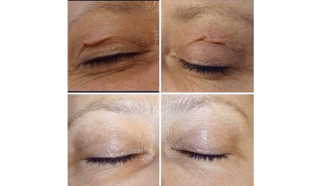
Abdominoplasty is a cosmetic surgery procedure that is used to remove excess fat from the abdominal area in order to tighten the muscles and fascia of the abdominal wall. This type of surgery is usually used in patients with loose or weakened tissue after pregnancy or following major weight loss. Heredity and genetics can also play a role in having a sagging stomach. Abdominoplasty is performed in different areas and often divided into several categories. Depending on the extent of the surgery, a full tummy tuck can take anywhere from 1 to 5 hours. Minor abdominoplasty takes between 1 and 2 hours. After this surgery, a new hole must be made by the surgeon to make the navel.
The cost of abdominoplasty surgery varies from country to country and can vary even within regions of a country. Just as the cost of many cosmetic surgeries depends on various factors such as the patient’s age, weight and health status, this surgery also depends on other post-operative costs in addition to these factors. These costs include pre- and post-operative care, equipment costs, surgeon’s fees, anesthesia and drugs.
Abdominoplasty surgery candidates
Not all obese people are suitable for abdominoplasty surgery. This surgery is usually recommended to people with excess fat in the abdominal area along with sagging skin, who must also have these conditions, including:
* are in perfect physical health and do not suffer from diseases that increase the risk of surgery such as heart disease, diabetes or asthma;
* have constant weight;
* Do not intend to get pregnant in the future;
* have realistic expectations of surgical results;
* Have a history of multiple pregnancies and deliveries;
* have lost their skin elasticity due to aging;
* They are ashamed of the excessive size of their stomach and are under mental pressure;
* Do not smoke.
Preparation before abdominoplasty surgery
Before doing any surgery, especially cosmetic surgery, you should consult with a reputable and experienced surgeon and get the necessary advice from him. Decisions should not be made without knowing and understanding possible complications and risks. Abdominoplasty surgery is a personal surgery that no one can make the final decision and accept the risk of doing it. This completely personal choice can be made easier with the help of the surgeon and the support of the people around you. In the first visit, the surgeon first asks questions to evaluate the person’s mental health and goals for performing this operation in addition to examining the person’s physical health. These questions include:
* What is your goal in performing abdominal cosmetic surgery and what results do you expect from the surgery?
* Do you plan to have children in the future?
* Have you reached your ideal weight and do not intend to lose weight in the future?
* What medicines, supplements or vitamins are you currently taking?
* Did you have a history of surgery?
* Do you have a history of special diseases, allergies?
* Do you currently use cigarettes, drugs and alcohol?
Then he checks the person’s health by performing necessary examinations and tests. It completes the patient file by taking pictures of the person’s abdomen. He asks her to stop taking blood thinners like aspirin and quit smoking and nicotine. It may limit or replace a person’s current medications.
In order to prepare yourself for surgery with a more relaxed mind, it is better to ask all your questions to the surgeon. The list of these questions is:
* Does my surgeon have a certificate to perform abdominoplasty surgery? How many years of experience does he have in performing this surgery?
* Is this surgery suitable for me?
* In which area will the incision be made in my abdomen and will it remain?
* How much time is required for complete recovery? What can I do to recover faster?
* What are the necessary cares for after the operation?
* When can I resume my daily physical activity?
* What are the possible complications and risks of surgery?
* In case of dissatisfaction with surgery, what should be the solution?
* In case of pregnancy after the operation, what effect does it have on the result of the surgery?
The method of abdominoplasty surgery
After performing the necessary measures for anesthesia and preparing him for this extensive surgery, they start the surgery by connecting the devices to control the heart rate, pulse and breathing assistance of the person in the state of anesthesia. First, a wide incision is made from the hip joint to the pelvis just above the poison area. Then another incision is made in and around the navel to remove excess skin and fat above the abdominal area. Stretching the skin of the abdominal wall and sutures and repairing the weakened muscles help to shrink the abdomen. Liposuction is often used to correct and remove excess abdominal fat. After the surgery, the area is bandaged and a drain is inserted to remove any excess fluid from the abdomen. Complete abdominoplasty includes suction lipectomy of the skin of the abdomen and buttocks. In partial abdominoplasty surgery, a smaller incision is made and the skin and fat of the lower abdomen are separated from the muscle fascia in a more limited way. The skin of the lower abdomen is stretched and excess skin is removed. Sometimes a part of the abdominal muscle wall becomes tighter. The remaining area is completely sutured. About 100 square centimeters of skin is removed during an abdominoplasty combined with liposuction. In a more advanced method that takes a little over four and a half hours. Excess fat is removed in a vertical and horizontal line. As a result, with this method, the stomach will be dramatically and significantly flat.





